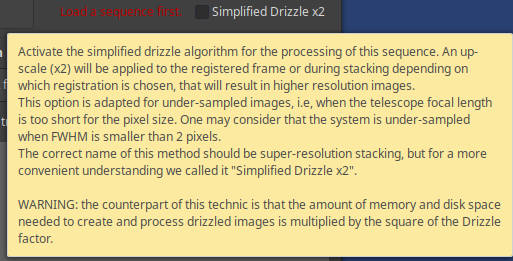You can probably gain a little, but (as you've already seen) at the expense of considerably slower post-processing, and quite a bit of extra storage space.
Given that you're shooting with a fairly wide angle lens, if you want more detail you'd probably be better off using a longer lens, and stitching together a panorama instead.
I'd consider drizzle primarily when you're already using the longest lens you have (or at least the longest that's suitable--a lot of zooms work rather poorly for astrophotography), and you still want more detail. For example, here's a conventional stack of 10 frames (4 minutes apiece):

Here are the same 10 source frames, but combined with a 2x Drizzle:

I tried to get the contrast and such about the same, but I was adjusting by hand, so they don't match exactly (the color balance is particularly far off--sorry 'bout that).
Anyway, I do see more detail in the second than the first (e.g., the dust lanes are noticeably more visible in the second version (especially on the near side).
For what (little) it's worth, the tech specs on the shots: Sony A900 at ISO 160, 10 frames, 4 minutes apiece, 135/2.8 @ f/2.8, plus 3 dark frames (also 4 minutes apiece). And, of course, the target is M31, M32, and NGC 205.
Side note: looking at things, if you click them to view at full sized you'll see the JPEG conversion (especially on the second) shows some pretty obvious posterization. I'll see if I can fix that and update if I can.




